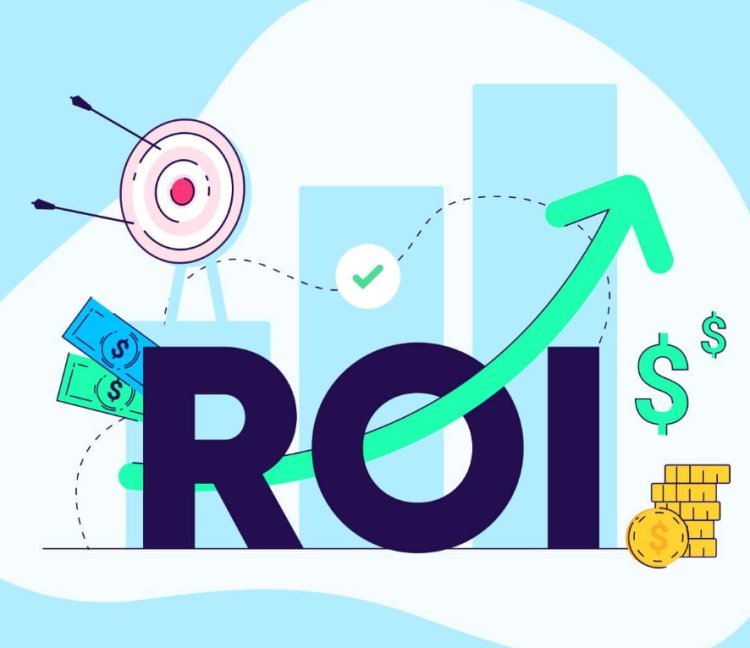How to Track and Measure the ROI of Your PPC Campaigns

Running a pay-per-click (PPC) campaign is one of the fastest ways to drive traffic to your website. But how do you know if your ads are actually making you money? That’s where tracking and measuring ROI (Return on Investment) comes in. If you don’t track your results, you could be wasting your budget on ads that don’t bring in real value.
In this guide, I’ll show you how to measure the ROI of your PPC campaigns and make sure your advertising dollars are working for you.
Understanding PPC ROI
Before we dive into the tracking methods, let’s define ROI in PPC advertising. Simply put, ROI tells you whether you’re making a profit from your ad spend.
ROI Formula:
RIO= ( Revenue - cost ) / cost * 100
If your ROI is positive, it means you’re making more money than you’re spending. If it’s negative, your campaign needs adjustments. But tracking ROI isn’t just about looking at revenue versus cost. It’s also about knowing which campaigns, keywords, and audiences drive the best results.
Setting Up Clear Goals
You can’t measure success without setting clear goals. Your PPC goals should align with your business objectives. Here are some common goals:
-
Sales – If you sell products online, your goal is to increase revenue.
-
Leads – If you’re a service-based business, your goal is to collect contact details from potential customers.
-
Sign-ups – If you offer a free trial or newsletter, your goal is to increase sign-ups.
Having clear goals allows you to track the right key performance indicators (KPIs) and measure success accurately.
Key Metrics to Track for PPC ROI
To track ROI, you need to monitor several PPC metrics. Here are the most important ones:
1. Click-Through Rate (CTR)
This metric shows how many people clicked on your ad after seeing it. A high CTR means your ad is relevant to users.
2. Cost Per Click (CPC)
CPC tells you how much you’re paying for each click. Lower CPC means you’re getting traffic at a lower cost.
3. Conversion Rate
This is the percentage of visitors who complete the desired action (buying a product, signing up, etc.).
4. Cost Per Acquisition (CPA)
CPA tells you how much it costs to acquire one customer. If your CPA is too high, you may need to adjust your strategy.
5. Customer Lifetime Value (CLV)
CLV estimates how much a customer will spend with you over time. If your CLV is higher than your CPA, your PPC campaign is profitable.
Setting Up Conversion Tracking
To measure ROI, you must track conversions. Here’s how:
1. Google Ads Conversion Tracking
-
In Google Ads, go to Tools & Settings > Measurement > Conversions
-
Click + New Conversion Action
-
Set up tracking for website, phone calls, or app conversions
-
Install the tracking code on your site
2. Facebook Pixel for Facebook Ads
If you’re running Facebook Ads, set up Facebook Pixel to track user actions on your website.
3. UTM Parameters for Better Tracking
Use UTM parameters in your ad URLs to track which campaigns drive conversions in Google Analytics.
4. Phone Call and Offline Conversions
If customers call you after seeing an ad, use call tracking software to measure these conversions.
Analyzing PPC Performance with Analytics Tools
To track ROI effectively, you need the right tools. Here are some of the best ones:
1. Google Analytics
Google Analytics helps track user behavior, traffic sources, and conversions.
2. Google Tag Manager
This tool makes it easy to add tracking codes without editing your website code.
3. Third-Party PPC Tracking Tools
Some advanced tools like SEMrush, HubSpot, and Ahrefs offer deeper insights into PPC performance.
Calculating the ROI of Your PPC Campaigns
Let’s go through an example calculation:
-
Ad Spend: $2,000
-
Revenue Generated: $6,000
ROI= ( 6000-2000 ) / 2000*100 ROI = 200
This means for every $1 spent, you made $2 in profit. If your ROI is low or negative, it’s time to optimize your campaigns.
Improving ROI Through Optimization Strategies
If your PPC campaign isn’t profitable, try these strategies:
1. A/B Testing Ads and Landing Pages
Test different headlines, images, and CTAs to find what works best.
2. Adjusting Keyword Bids
Lower bids on low-performing keywords and increase bids on high-converting ones.
3. Using Audience Targeting
Narrow down your audience to people most likely to convert.
4. Retargeting Lost Visitors
Run retargeting ads to bring back visitors who didn’t convert the first time.
5. Eliminating Wasted Ad Spend
Check your search term reports and exclude irrelevant keywords that waste your budget.
Common Pitfalls and How to Avoid Them
Avoid these mistakes to maximize your PPC ROI:
-
Not tracking all conversions – Ensure every sale or lead is recorded.
-
Focusing only on clicks – Clicks don’t matter if they don’t lead to conversions.
-
Ignoring attribution models – Consider different touchpoints before a user converts.
Conclusion
Tracking PPC ROI is essential to making data-driven decisions and ensuring every dollar you spend delivers results. The key is to continuously monitor, analyze, and optimize your campaigns for better performance.
Want Expert Help with Your PPC Campaigns?
If you’re looking to maximize your PPC results, we can help! Our expert team will analyze your ads, track performance, and optimize campaigns for higher ROI. Get in touch today and take your PPC strategy to the next level!
Visit Now: https://www.rankingexpertz.com/
What's Your Reaction?














